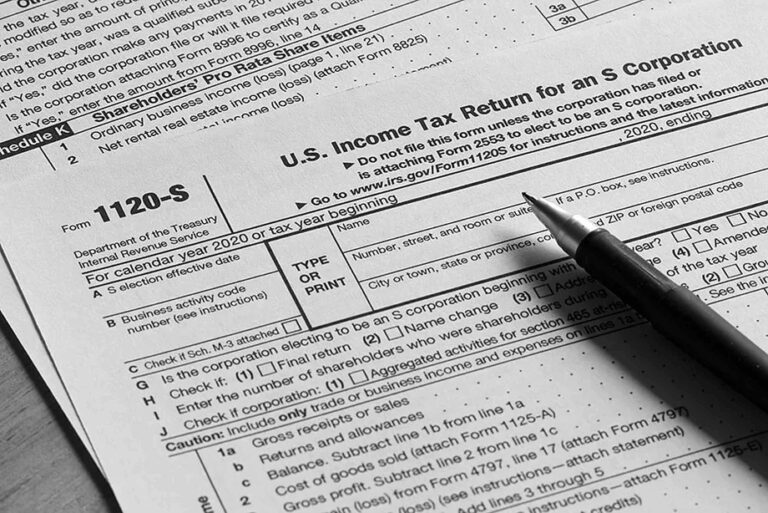Cost Basis of Gifted Stock- Comprehensive Guide 2025
Table of Contents
When you receive stock as a gift, the Internal Revenue Service (IRS) has specific rules on how to determine your cost basis (also called tax basis) for that stock. This basis is critical because it determines the capital gain or loss you realize when you eventually sell the stock. The cost basis impacts how much tax you owe.
A Brirf Overview On Cost Basis Of Gifted Stock

What is Cost Basis/Tax Basis?
Cost basis is the original value or purchase price of an asset, such as stock, real estate, or other investments, used to determine capital gains or losses for tax purposes when the asset is sold. It includes not only the amount paid to acquire the asset but also any additional costs related to the purchase, like commissions or fees.
The cost basis serves as the starting point to calculate taxable profit or deductible loss by comparing it against the sale price. For gifted assets, the cost basis is generally the donor’s original cost basis, while for inherited assets, it typically steps up to the fair market value at the date of the decedent’s death. Accurately tracking cost basis is essential for correctly reporting capital gains or losses on tax returns and ensuring proper tax compliance.
- Cost basis is the original value of an asset for tax purposes, usually the purchase price plus any commissions or fees.
- For gifted stock, your cost basis is usually the donor’s original cost basis rather than the market value at the time of the gift.
How To Determine Cost Basis Of Gifted Stock?
The cost basis of gifted stock is generally determined by the original purchase price that the donor paid for the stock, known as the donor’s adjusted cost basis. When you receive stock as a gift, you typically inherit this same basis, which means your tax calculations on any future sale will use the donor’s original cost to determine gain or loss.
However, if the fair market value (FMV) of the stock on the date of the gift is lower than the donor’s cost basis, special rules apply to prevent a loss greater than the actual economic decline. In such cases, your basis for calculating a gain remains the donor’s original cost basis, but if you sell the stock for less than the FMV at the gift date, your loss basis is limited to that FMV.
If you sell the stock for a price between the donor’s cost basis and the FMV, no gain or loss is recognized. Additionally, the donor’s holding period transfers to you, which affects whether any capital gains are taxed as short-term or long-term. This method ensures fairness in tax treatment by preventing artificially inflated losses while maintaining proper recognition of gains.
General Rule:
- The recipient’s cost basis = the donor’s adjusted cost basis (the price the donor originally paid, adjusted for things like stock splits or reinvested dividends).
- This means you inherit the donor’s holding period and purchase price.
Special Rule for Gifts When FMV at Gift Date Is Lower Than Donor’s Basis:
When the fair market value (FMV) of gifted stock on the date of the gift is lower than the donor’s original cost basis, the IRS applies a special dual basis rule to prevent the recipient from claiming a loss greater than the actual economic loss. Under this rule, two different cost bases are used depending on whether the recipient sells the stock at a gain or a loss:
- If you sell the stock for more than the donor’s original cost basis, your cost basis for calculating a capital gain is the donor’s original basis.
- If you sell the stock for less than the FMV at the date of the gift, your cost basis for calculating a capital loss is the FMV on the gift date.
- If you sell the stock for a price between the donor’s basis and the FMV at the gift date, you do not recognize any gain or loss.
This rule ensures that you cannot claim a loss based on the donor’s higher cost if the stock’s value had already declined before the gift, while still allowing recognition of a gain if the stock’s value rises after the gift. It effectively prevents “double-dipping” by both the donor and the recipient when reporting losses.
Why This Matters
Understanding how cost basis is determined for gifted stock is crucial because it directly affects how much tax you will owe when you sell the shares. Since your taxable gain or loss is calculated by subtracting your cost basis from the sale price, using the correct basis ensures you pay the right amount of tax—no more, no less.
The special rules around gifts where the fair market value is lower than the donor’s basis are especially important to prevent taxpayers from claiming artificial losses that don’t reflect actual economic loss.
Additionally, knowing that you inherit the donor’s holding period helps determine whether your gains qualify for lower long-term capital gains tax rates, potentially saving you significant money. Ultimately, accurate cost basis calculation ensures compliance with tax laws, avoids unexpected tax bills, and helps with better financial planning.
- This dual basis rule ensures:
- You don’t claim a loss larger than the actual decline in value.
- You still report correct capital gains if the stock appreciates.
Example Illustrations
Example 1: FMV at gift date is higher than donor’s basis
- Donor’s basis: $5,000
- FMV on gift date: $7,000
- You sell for: $10,000
- Your basis = $5,000 (donor’s basis)
- Capital gain = $10,000 – $5,000 = $5,000 (taxable)
Example 2: FMV at gift date is lower than donor’s basis
- Donor’s basis: $7,000
- FMV on gift date: $5,000
- If you sell for:
- $8,000 (above donor’s basis): basis = $7,000; gain = $1,000
- $6,000 (between FMV and donor basis): no gain or loss
- $4,000 (below FMV): basis = $5,000; loss = $1,000
- Holding Period Of Gifted Stock for Cost Basis Calculation
When you receive stock as a gift, the holding period for that stock generally includes the time the donor held it before gifting. This means your holding period is considered “tacked on” to the donor’s holding period. The holding period is important because it determines whether any gain or loss on the eventual sale is classified as short-term (held one year or less) or long-term (held more than one year). Long-term capital gains usually benefit from lower tax rates.
For example, if the donor held the stock for 10 months before gifting it to you, and you hold it for another 8 months before selling, your total holding period is 18 months—qualifying for long-term capital gains treatment.
Exception: If the fair market value (FMV) on the gift date is lower than the donor’s basis and you sell the stock for a loss using the FMV as your basis, your holding period begins on the date you received the gift, not the donor’s holding period.
Understanding this helps in planning the timing of your sale to minimize taxes by qualifying for the more favourable long-term capital gains rates.
This is important for determining if your capital gains are short-term or long-term:
- Short-term gains: Assets held for 1 year or less.
- Long-term gains: Assets held for more than 1 year, taxed at lower rates.
- Tax Rates on Capital Gains
Capital gains tax rates depend on how long you hold an asset before selling it and your taxable income. The IRS distinguishes between short-term and long-term capital gains, each taxed differently:
- Short-Term Capital Gains: These apply when you sell an asset held for one year or less. Short-term gains are taxed at your ordinary income tax rates, which range from 10% to 37% depending on your total taxable income.
- Long-Term Capital Gains: These apply when you sell an asset held for more than one year. Long-term gains benefit from lower tax rates to encourage long-term investment. The rates typically are:
- 0% for taxpayers in the lower income brackets,
- 15% for most taxpayers in the middle income brackets,
- 20% for taxpayers in the highest income brackets.
For example, in 2025 for single filers, the long-term capital gains rates roughly apply as:
- 0% on income up to about $44,625,
- 15% on income between $44,626 and $492,300,
- 20% on income above $492,300.
Additionally, certain high-income taxpayers may owe an additional 3.8% Net Investment Income Tax (NIIT) on capital gains.
Understanding these rates is crucial for tax planning, especially when deciding when to sell gifted stocks to minimize your overall tax liability
Long-Term Capital Gains Tax Rates (2025 U.S. Federal Rates, for example):
| Income Level (Single Filer) | Long-Term Capital Gains Rate |
| Up to $44,625 | 0% |
| $44,626 to $492,300 | 15% |
| Over $492,300 | 20% |
Short-Term Capital Gains:
- Taxed at ordinary income tax rates, which range from 10% to 37% depending on your taxable income.
Calculating Capital Gain or Loss on Sale
To calculate the capital gain or loss when you sell an asset like gifted stock, you subtract your cost basis (the original value of the asset for tax purposes) from the sale price:
Capital Gain (or Loss) = Sale Price – Cost Basis
· If the result is positive, you have a capital gain (profit), which may be subject to capital gains tax.
· If the result is negative, you have a capital loss, which may be used to offset other gains or, up to certain limits, reduce your taxable income.
For gifted stock, determining the correct cost basis depends on the donor’s original cost and the fair market value (FMV) at the date of the gift, especially if FMV is lower than the donor’s basis (the special dual basis rule applies).
Next, you consider your holding period to decide if the gain or loss is short-term or long-term, affecting the tax rates applied. Long-term gains, from assets held more than one year, usually benefit from lower tax rates.
Accurately calculating capital gain or loss ensures correct tax reporting and helps with effective tax planning when selling gifted assets.
Additional Considerations
When dealing with the cost basis of gifted stock and capital gains taxes, several other important factors come into play:
- Gift Tax Impact: The donor, not the recipient, is generally responsible for any gift tax due. Gift tax paid does not affect the recipient’s cost basis.
- Inherited vs. Gifted Stock: Unlike gifted stock, inherited stock typically receives a stepped-up basis—its cost basis is adjusted to the fair market value on the date of the donor’s death. This can significantly reduce capital gains tax for heirs.
- Record Keeping: It’s essential to maintain thorough records of the donor’s original cost basis, the fair market value at the gift date, and the date of the gift. Proper documentation is crucial for accurate tax reporting and in case of IRS audits.
- State Taxes: Capital gains tax rules vary by state. Some states tax capital gains as ordinary income, while others have different rates or exemptions. Always check your state’s tax laws.
- Alternative Minimum Tax (AMT): While less common now, certain transactions can trigger AMT, which may affect your tax liability on capital gains.
- Wash Sale Rules: If you sell stock at a loss and repurchase the same or substantially identical stock within 30 days, the loss may be disallowed for tax purposes, affecting your cost basis.
- Tax Planning: Timing the sale of gifted stock to qualify for long-term capital gains treatment can reduce tax liability. Consult with a tax advisor to strategize based on your income and tax situation.
Understanding these additional points helps ensure compliance with tax laws and optimizes your tax outcomes when dealing with gifted stock.
Summary
When you receive stock as a gift, your cost basis—the value used to calculate capital gains or losses—is generally the donor’s original purchase price (adjusted cost basis). If the fair market value (FMV) at the gift date is lower than the donor’s basis, a special dual basis rule applies: your basis for gain is the donor’s cost, but for loss, it’s the FMV at the gift date. The donor’s holding period transfers to you, which influences whether gains are taxed at favourable long-term rates or higher short-term rates.
Calculating capital gains or losses involves subtracting this cost basis from the sale price, and the resulting gain or loss is subject to tax depending on your holding period and income level. Accurate record keeping and understanding tax rates, as well as differences between gifted and inherited stock, are essential for proper tax reporting and planning.
| Aspect | Gifted Stock Basis Rule |
| Basis when FMV ≥ donor basis | Recipient’s basis = donor’s adjusted cost basis |
| Basis when FMV < donor basis | Dual basis: basis for gain = donor’s basis; basis for loss = FMV at gift date |
| Holding period | Includes donor’s holding period |
| Capital gain/loss calculation | Sale price minus appropriate basis |
| Tax rates | Long-term (0%, 15%, 20%) or short-term (ordinary income tax rates) |
Fequently Asked Questions (FAQS)
1. What is the cost basis of gifted stock?
The cost basis is generally the donor’s original purchase price of the stock, adjusted for any stock splits or dividends. This basis is used to calculate your capital gains or losses when you sell the stock.
2. What if the fair market value (FMV) at the gift date is less than the donor’s basis?
A special dual basis rule applies. Your basis for calculating gains is the donor’s original cost basis, but for losses, it is the FMV on the gift date. If you sell between these two values, no gain or loss is recognized.
3. Does the holding period of the donor transfer to me?
Yes, your holding period includes the time the donor held the stock. This helps determine if your capital gain or loss is short-term or long-term.
4. How are capital gains on gifted stock taxed?
Capital gains are taxed at either short-term or long-term rates depending on your holding period. Long-term gains usually enjoy lower tax rates ranging from 0% to 20%.
5. What records should I keep for gifted stock?
Keep documentation of the donor’s original cost basis, the gift date and FMV, and any adjustments like stock splits or dividends. This ensures accurate tax reporting.
6. Is the donor responsible for gift tax?
Yes, gift tax, if applicable, is generally the responsibility of the donor, not the recipient.
7. How is inherited stock basis different from gifted stock?
Inherited stock usually receives a stepped-up basis equal to its FMV at the donor’s date of death, which can minimize capital gains taxes for the heir.






